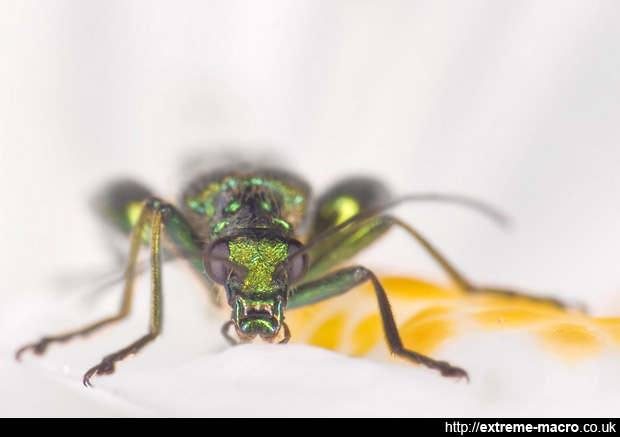Non Stacked Extreme Macro
by Johan J Ingles-Le Nobel
Last updated August 31, 2017
Plenty of people do extreme macro photography without using focus stacking techniques in their work, and this is definitely the most straightforward way in which to capture extreme macro images.
Much cheaper as well, as all you need is a decent achromatic macro attachment such as the excellent Raynox DCR-150 that many people start out with.
Closeup Lenses
an achromat closeup lens like a Raynox is the best way to learnA Raynox DCR-150 closeup lens is a great piece of kit for those with a DSLR starting out in macro photography on a tight budget as it costs less than a quarter the cost of a dedicated macro lens and just attaches to your standard lens with a holder that's also provided. One of these bad boys allows users to use autofocus and in-camera aperture metering, so for the person starting out in extreme macro an achromat closeup lens like a Raynox is the best way to learn the challenges inherent in this type of photography. Not only that but the optical quality really is there with these units.

Lovely green shiny fat legged beetle, shot using a Raynox DCR-150 closeup lens. Anyone who tells you that there's a simpler way to start out in extreme macro is bonkers :)
Reverse Lenses
Using reversed lenses are another way that many folk start their extreme macro adventures. This can be even cheaper than a Raynox, but reversing a lens means you lose all the automatic features of your camera such as autofocus and aperture metering, and it can be a discouraging way to start out extreme macro. That said, a reverse lens with an extension tube is a cheap way to get started.
There are many ways to use reverse lenses and many lenses that can be reversed. Normal standard lenses from 28mm up are suitable for reversing, provided that they have an aperture ring and you'll need to use extension tubes or a helicoid to prevent vignetting. Enlarger lenses are great for reversing because they're designed for flatfield use. Zoom lenses can even be reversed to give you variable magnification.
Related Articles





